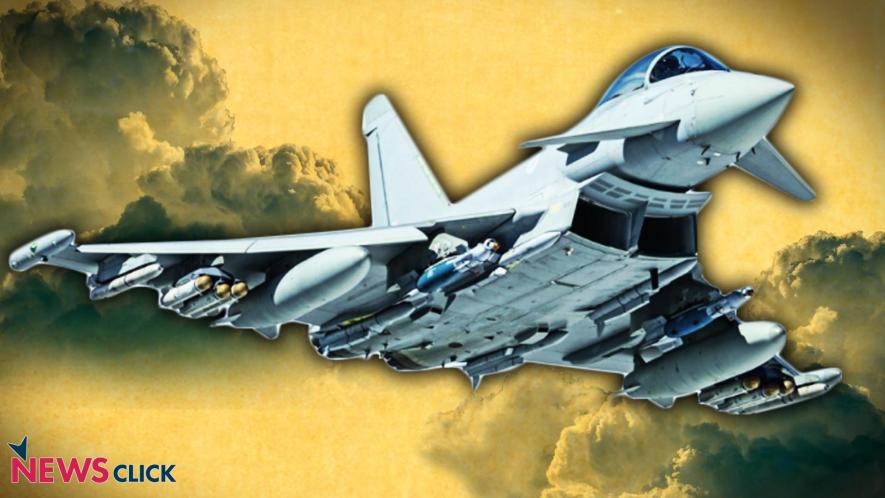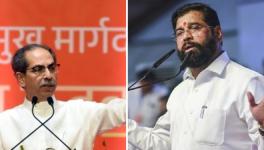India’s MRFA Procurement: Deja Vu?

What can you possibly call it when history repeats itself many times over, way beyond tragedy and farce? That old horror story, India’s efforts at “urgent” procurement of fighter aircraft to make up for depleting of fleet strength, is set to start all over again. Authoritative sources have been telling various media outlets that the government will “soon” issue a Request for Proposal (RfP), in other words a tender, for 114 Multi-Role Fighter Aircraft (MRFA) valued at an estimated $20 billion (Rs 1 lakh 40,000 crore) to be manufactured in India. This is, once again, considered the most expensive military acquisition ever. Sounds familiar? It should!
The tragedy is that this acquisition and its associated tender process is going to be a virtual repeat of the ill-fated medium-weight multi role combat aircraft (MMRCA) tender of 2007 for 128 fighters, of which 108 were to be manufactured in India. The Rafale fighter had been selected in 2012 under this tender which was arbitrarily scrapped by the Narendra Modi government in 2014 in favour of a scandal-ridden deal for outright purchase of just 36 Rafale fighters.
Background
Since the early 2000s, the Indian Air Force (IAF) had been clamouring for induction of new fighters. The various MiG types were nearing end of life and the indigenous Light Combat Aircraft (LCA) was then nowhere in sight. Squadron strength was rapidly declining from the approved 42 squadrons to a foreseeable 30 or less. Induction of the Russian Su30 MkI somewhat made up, but was offset by the impending retirement of several other fighter aircraft types such as the Jaguar, MiG29, Mirage 2000 etc.
After much delay, the then United Progressive Alliance government had issued an RfP for 126 MMRCA based on detailed study of foreseeable fleet needs and broad specifications of required fighter aircraft.
Assessment of the six contenders led to short-listing of the Eurofighter and the Rafale, of which the Rafale was selected in 2012 after rigorous field tests. However, the final contract got mired in interminable deliberations, undue caution, and internal inquiries into possible comparative evaluation errors. The entire process also highlighted deep flaws in India’s defence procurement, such as elaborate procedures and faulty decision-making criteria.
It is indeed ironic that the official sources have said that while the government is fully cognizant of the frustrations of the Indian Air Force (IAF) regarding continued dwindling of fleet strength, additional time is being taken to properly frame the 114 MRFA tender so as to ensure a non-controversial, transparent and efficient procurement. But wasn’t that where all this began? With the problem having been solved by scrapping a tender and purchasing 36 Rafale fighters outright?
Convoluted Procurement Process
The first issue that must be stated bluntly at the very outset is that this crisis of low fleet strength and the need for a fresh acquisition process has been entirely unnecessary. India’s poor forward planning and labyrinthine procurement procedures over the past several decades are, of course, partly to blame.
The MMRCA acquisition of 128 fighters ending with selection of the Rafale in 2012, was needlessly dragged on till 2014 and beyond, but need not have been scrapped by the Narendra Modi government and reduced to purchase of just 36 fighters. The deal could have been efficiently and quickly brought to fruition. At the rate of around 10-12 aircraft per year, which is what Dassault has now delivered, 80-odd fighters could have been delivered by HAL (Hindustan Aeronautics Ltd) from, say, 2017 to the present, apart from the 18 directly from Dassault, the order of 128 being completed in a few years!
Instead, India is starting the entire process all over again. The IAF would, of course, have understood the gap left by the abrupt reduction of the well-thought out need for 128 fighters to 36. It was the Bharatiya Janata Party (BJP) government’s late realisation that led to a needless release of a fresh RfI for 114 fighters in 2019.
Now, if the MRFA procurement goes through the conventional process, the first step would be the government issuing an Acceptance of Necessity (AoN). Even this hasn’t happened yet!
So, the RfP or tender would probably be finalised and issued in mid-2025, followed by preliminary technical assessment of all contenders, field trials, evaluation, comparison of financial bids and life-cycle costs, selection of L1, and thereafter the peculiarly Indian price negotiation which should precede finalisation. Then the manufacturing facility in India needs to be set up, technologies transferred, workers and staff trained.
Given the past record of India’s procurements, one may expect deliveries to start only in the early 2030s with all 114 fighters inducted by the end of the decade. That is a shocking 15-year delay compared with the schedule of the scrapped 128 MMRCA programme. And the BJP-led government is solely to blame for this grave risk to national security.
MRFA Choices & IAF Fleet
Let us look at the fleet strength first.
The IAF currently has around 31 squadrons against the sanctioned strength of 42. It should be noted that this figure has been bandied about for over two decades and there is no figure in the public domain reflecting a more contemporary assessment of threat perceptions and fleet size and composition.
The entire MiG fleet has been retired, bar the few carrier borne MiG29s still in service but in poor condition, awaiting replacement by the 27 newly acquired Rafale-M marine fighter aircraft. The remaining Jaguars, Mirage-2000s are continuing in service after mid-life upgradations but may be seen as on the way out. The Su30 MkI is the current air superiority mainstay in the heavy fighter class.
The Tejas Mk1 and Mk1A are expected to provide the future numbers of light interceptors and strike aircraft like the MiGs did earlier. The IAF has ordered 40 LCA Tejas Mk1 and 83 plus 97 of the upgraded Mk1A, while it has confirmed its intent to acquire 120 of the more powerful LCA Mk2 which is still being developed. HAL is already delivering LCA fighters at the rate of 12 per year and is adding another assembly line to reach 18 per year.
The indigenous 5th generation Advanced Medium Combat Aircraft (AMCA) developed by DRDO (Defence Research & Development Organisation) is expected to be ready only by around 2035.
The Chief of Air Staff has stated that if these above timelines are adhered to, and the MRFA acquisition proceeds efficiently, the IAF would be reasonably well-placed. While LCA production, as well as development and productionisation of advanced variants are well on their way despite initial hiccups, the timelines for MRFA acquisition and induction are still up in the air.
The question is, does the MRFA acquisition really require the usual long-winded process of initial assessment, comparison, field trials etc? All the contenders bar two are the same as in the earlier MMRCA tender of 2007. The contenders then were the Mikoyan MiG 35 from Russia, the storied US fighters Lockheed Martin’s F-16 and Boeing F/A-18 E/F, Sweden’s SAAB JAS-39 Gripen, the Eurofighter Typhoon from a European consortium led by British Aerospace, and the Dassault Aviation Rafale from France. To this are now added the Boeing F15 Eagle-II and the Lockheed Martin F21 replacing the F16.
The F15 EX Eagle II has been thrown into the ring by the US in one more attempt to break in to the lucrative Indian fighter jet market after multiple failures. The F21 from Lockheed Martin is actually just a refurbished F16 Block 70 with new radar, avionics and weapons systems, the aircraft itself having gone through extensive evaluation during the MMRCA tender.
Of the others, the Boeing F/A18 E/F was also assessed during the MMRCA bid but did not make the cut and, in fact, was also not selected in the recent Indian Navy carrier-based aircraft bid which was won by the Rafale-M. The MiG35 is an upgraded version of the MiG29 which India has used earlier, and offers few advances. The Saab JAS39 Grippen is a wonderful fighter but is of a similar class to India’s LCA and not what the IAF is looking for.
In effect, the earlier assessments should stand, and an elaborate exercise is unnecessary and time-consuming, the only rationale being to prove that an unbiased selection is taking place. But who is India trying to convince of a completely fair process, and why?
Selection Procedure
Let us be clear. There can be no completely “objective” assessment comparing several fighter aircraft. If such a thing were possible, all the world’s air forces would be acquiring the same aircraft! Many factors will, and do, come into play when a country selects any military equipment.
In India’s case, the IAF is looking for a medium-weight multi-role fighter in a fleet with the LCA at the lighter interceptor end and the Su30 at the heavier air superiority end. Requirement for a modern fighter with service and upgrading potential till the mid-2040s more or less rules out the legacy F16/F21, F/A18 and F15s, however good they may be.
The IAF is looking to diversify from over-reliance on Russian aircraft. It also has doubts about US reliability as a defence supplier given past experience when the US denied permission to Saab to supply the JAS17 Viggen with GE F-404 engines to India and its tendency to apply sanctions whenever it wants.
The Rafale was selected in the MMRCA tender over the Eurofighter Typhoon, both on comparative performance as well as considering the uncertainties involved in a multi-country product like the Eurofighter, as evidenced by Germany’s veto over its supply to Turkey which was lifted only very recently.
The IAF has also struggled for long with a fleet with too many aircraft types posing enormous problems with logistics, spares inventory, maintenance and training. A more compact fleet with just three-four mostly indigenous or India-made fighter types would be highly desirable.
The above makes clear that many criteria come into play while selecting the fighter that is the best fit for a country. From this point of view, the Rafale seems to select itself for the MRFA based on the earlier MMRCA process and the criteria outlined above, reducing time for selection, leaving only details of production in India to be worked out. The Rafale-M having already been selected for the Navy only increases the synergies involved.
If common sense had been used, the Navy selection should have taken place along with the selection of Rafale under the MMRCA for the synergies involved. But then again, why was the MMRCA acquisition cancelled in the first place? That is where this article began…
The writer is with the Delhi Science Forum and All India People’s Science Network. The views are personal.
Get the latest reports & analysis with people's perspective on Protests, movements & deep analytical videos, discussions of the current affairs in your Telegram app. Subscribe to NewsClick's Telegram channel & get Real-Time updates on stories, as they get published on our website.
























